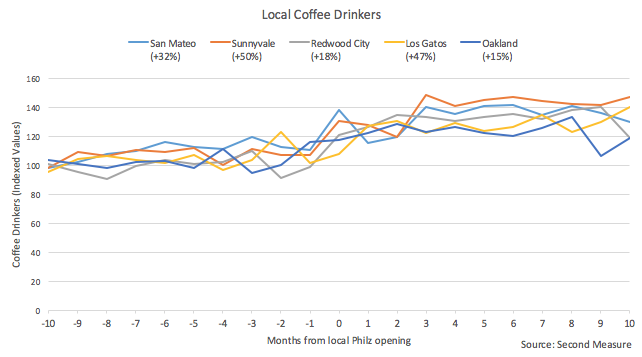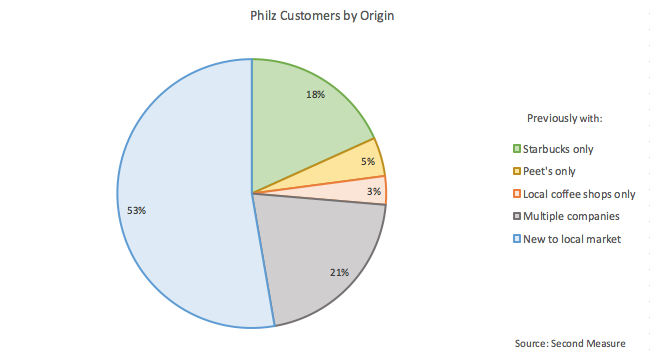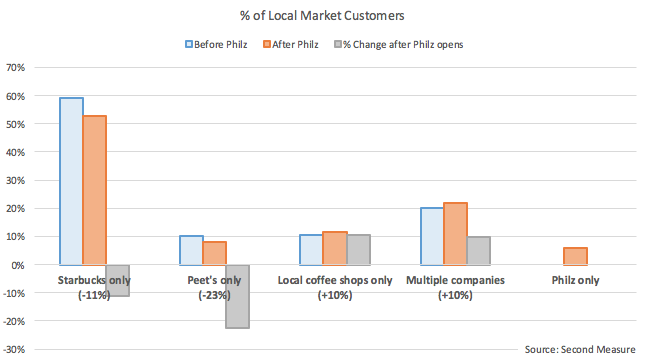NOTE: Bloomberg Second Measure launched a new and exclusive transaction dataset in July 2022. Our data continues to be broadly representative of U.S. consumers. As a result of this panel change, however, we recommend using only the latest posts in assessing metrics, and do not support referring to historical blog posts to infer period-over-period comparisons.
Philz Coffee received $15 million in Series B funding last year to expand its locations. One of these new locations is in our neighborhood, and this got us wondering: is Philz changing local coffee markets?
Specifically, we wanted to know:
- Whether Philz grows local coffee markets
- Where Philz gets its customers
- If nearby Starbucks, Peet’s, and local coffee shops lose customers to Philz
We looked at five locations where Philz recently opened in the San Francisco Bay Area: San Mateo, Sunnyvale, Los Gatos, Redwood City, and Oakland.
We found:
- Philz helped grow local coffee markets.

More people drank coffee in these cities after Philz opened: monthly coffee drinkers at these companies[1] grew 15-50% from 10 months before Philz opened to 10 months after. Controlling for changes in populations and growth in nationwide coffee consumption, local coffee sales followed the same trend. - Philz attracted coffee-drinkers to local markets, and these customers make up a high percentage of their customer base.

- In the new market, coffee-drinkers take advantage of choice. A higher percentage of customers visit more than one coffee shop in a month; there are also fewer loyalists with Peet’s and, to a lesser extent, with Starbucks. Interestingly, loyalists increased among smaller local coffee shops.

Philz has been able to grow and change local coffee markets in the Bay Area[2], but will it be able to shift local tastes as it expands beyond California? Request a demo to find out more about local markets.
- Not all local coffee shops are accounted for, but the same rules for categorization were used for each market. ↩︎
- This analysis does not account for the number of locations a company has or how far the locations are from Philz. However, we take this as initial support that Philz impacts local markets. ↩︎
